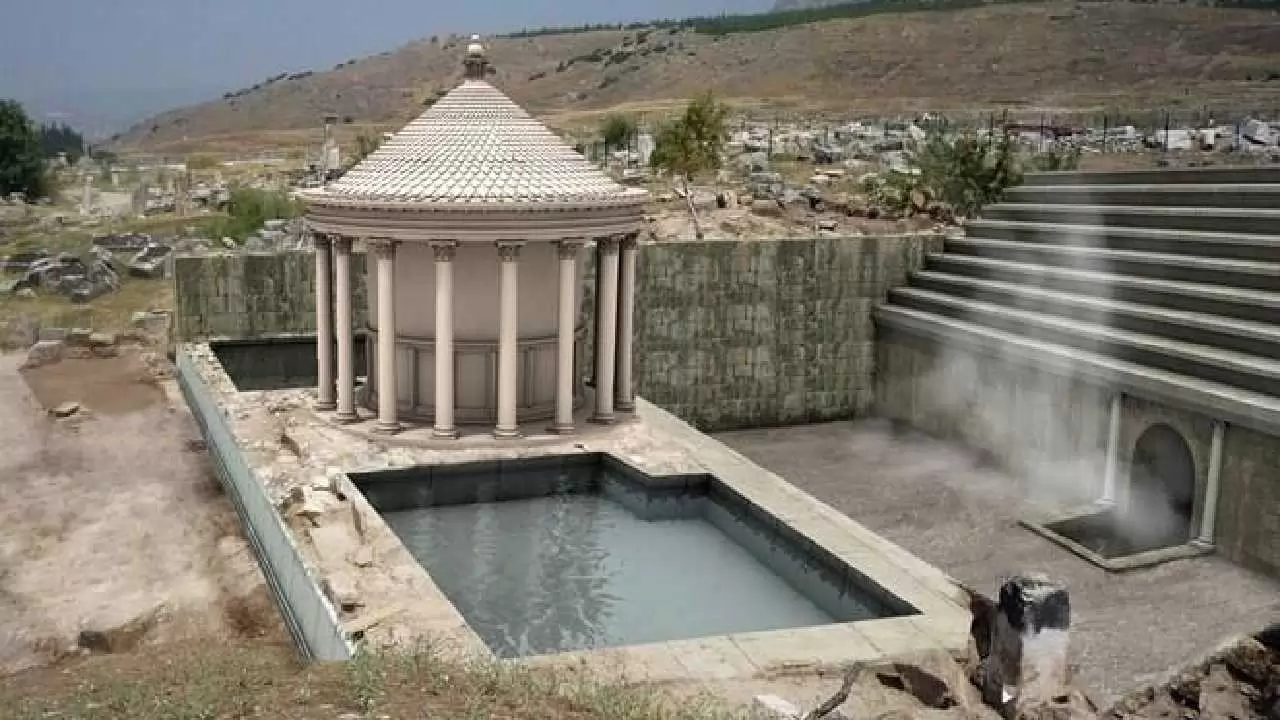
X/ArianeEstolonio
New Delhi: In the ancient city of Hierapolis, Turkey, lies an enigmatic temple known as the 'Gate of Hell', shrouded in legend and fear. Believed to be a portal to the underworld, it has long been associated with eerie tales of those who enter never returning alive. Even animals and birds that venture inside meet a grim fate. However, after centuries of speculation, scientists claim to have finally unraveled the secrets of this ominous site.
The 'Gate of Hell' has captivated imaginations since ancient Roman and Greek times. Revered geographer Strabo, in his 2000-year-old book 'Geographica', documented his encounter with the temple. Describing it as a fog-shrouded cave where creatures perish upon entry, his observations added to the mystique surrounding the site. Legend spoke of priests who, despite being sentenced to death, emerged unscathed, sparking intrigue and fear.
Have you heard of Pluto's Gate to Hell?
— Science Channel (@ScienceChannel) July 20, 2022
Located in Turkey, it was once believed to be a portal to hell. Later, a biologist discovered the real cause of animal deaths around the gate was volcanic carbon dioxide.
📺 More on #MysteriesOfTheAbandoned at 9p ET pic.twitter.com/O6d6IksKzu
According to ancient folklore, the temple was a site of sacrificial rituals, where animals like birds and bulls were offered to appease the gods. Skeletal remains of birds and inscriptions depicting deities on temple ruins corroborate these beliefs. For centuries, the myth endured, casting a shadow of dread over the region.
In 2018, a team of scientists led by volcanologist Hardy Pfannz embarked on a groundbreaking investigation to demystify the 'Gate of Hell'. Their findings shed light on the inexplicable deaths associated with the site. Through rigorous analysis, they discovered alarming levels of carbon dioxide emanating from beneath the temple.
Gate of Hell, Hierapolis.
— well-meaning (@FreshSummerWind) May 27, 2023
The Plutonium, also known as the Gate of Pluto, was a religious site dedicated to the Greek god Pluto in the ancient city of Hierapolis near Pamukkale in the Denizli Province of modern Turkey. pic.twitter.com/FwTsGlvVct
The team's research revealed a significant buildup of carbon dioxide, particularly during the night, coinciding with the deaths of small animals. They concluded that the temple sits atop a volatile hotspot emitting poisonous gas. Contact with this lethal carbon dioxide leads to swift fatalities among humans and wildlife alike.
The 'Gate of Hell' poses the greatest threat during the early hours of the morning when gas levels peak after accumulating overnight. As daylight breaks, the gas dissipates, offering a temporary reprieve from its deadly effects. This scientific revelation dispels the supernatural aura surrounding the temple, replacing fear with an understanding of its natural dangers.
GATE TO HELL FOUND IN TURKEY pic.twitter.com/XW2sHzhdxq
— lovie. (@ArianeEstolonio) April 7, 2013
In unraveling the mysteries of the 'Gates of Hell', scientists have peeled back the layers of myth and legend, revealing a phenomenon rooted in scientific reality. As the ancient veil of fear is lifted, the temple's legacy transforms from a realm of supernatural terror to a testament to the awe-inspiring forces of nature.





Copyright © 2025 Top Indian News
